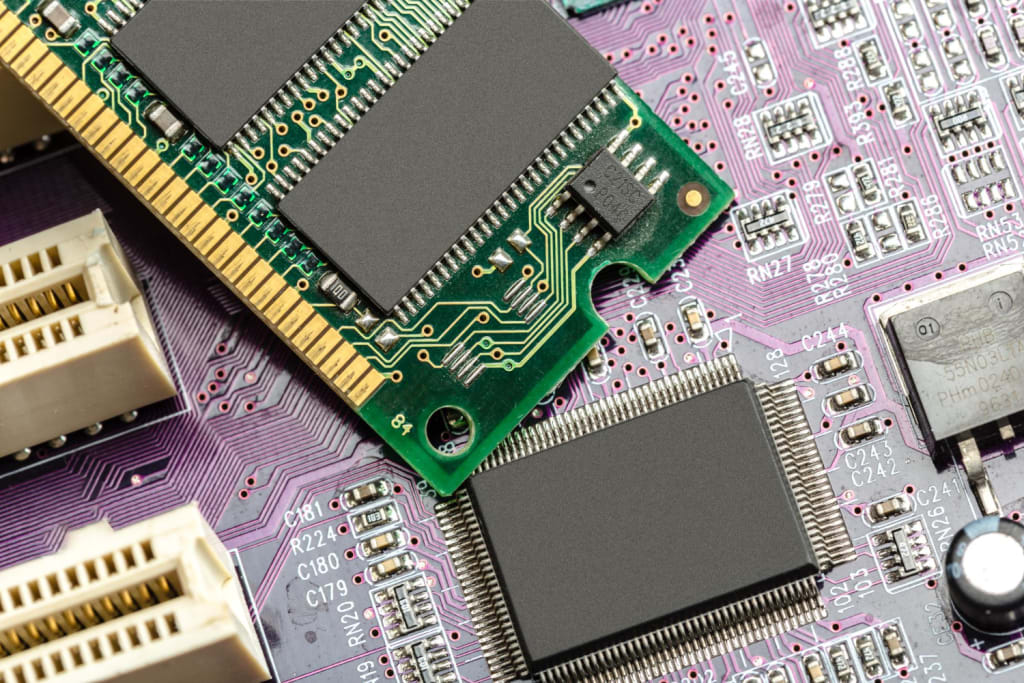Exploring the Multifaceted World of Computer Memory
From Bytes to Terabytes: Understanding the Layers, Types, and Evolution of Digital Storage

When you hear "computer memory," how many types of memory used in computer? Most think of RAM, but that's merely the tip of the iceberg. This journey will unveil the vast universe of computer memory, shedding light on its different facets and interconnected components. Join us as we demystify the many types of computer memory, delving deeper into their roles and importance in the seamless operation of our digital devices.
The Heartbeat of Computing: What is Computer Memory?
Computer memory serves as the electronic sanctuary for data. Imagine it as the computer's library, with rows of data bookshelves. It's where the computer accesses essential data, similar to how our brains fetch memories. But exactly how many types of computer memory are incorporated in computer systems? And within these, how many are explicitly tailored for data storage and retrieval?
Primary Memory: The Frontline of Data Storage
Often dubbed the main memory, primary memory is the computer's immediate go-to for active data processing. Let's decode its various kinds:
RAM (Random Access Memory): Picture a bustling workspace, where various tasks (programs) are managed simultaneously. RAM is that workspace, vital for multitasking.
ROM (Read-Only Memory): The computer's immutable reference guide, storing data like system firmware that remains relatively static.
Cache Memory: Visualize a small sticky note, holding the most-referenced details, offering lightning-fast access.
Secondary Memory: The Vault of Data Preservation
Ever pondered the residence of your cherished photos, critical documents, or cherished applications? Enter secondary memory. How many parts of memory, some key players are:
Hard Disk Drives (HDDs): Picture grand data repositories. While they can hoard massive amounts of data, accessing it might be a tad time-consuming.
Solid-State Drives (SSDs): Envision the nimble counterpart of HDDs – like a sprinter, fast-paced especially in data retrieval.
Optical Drives: CDs and DVDs, reminiscent of vintage photo albums – less frequented today, yet holding a nostalgic charm.
Tertiary and Offline Memory: The Archives
While most computer users are familiar with the immediate workings of primary and secondary memories, the realms of tertiary and offline memories remain a tad more elusive. These memory types serve as the deep storage units of the computer world. Let's dive deeper to better understand their structure, functionality, and importance.
Tertiary Memory: Positioned between the rapid-access, volatile memories (like RAM) and long-term non-volatile memories (like HDDs), tertiary memory devices are often automated and can exchange data with primary storage without user intervention.
Characteristics:
Automated Access: Tertiary storage is typically automated with robotic mechanisms that move media units from storage into drives.
Slower but Larger: These memory types are slower compared to primary and secondary memory but have a significantly larger data storage capacity.
Reduced Cost-per-Bit: While they may be slower, their extended capacity often comes at a reduced cost-per-bit, making them economically beneficial for storing vast amounts of data.
Examples:
Robotic Tape Libraries: Large systems where tapes are automatically loaded into tape drives as required.
Optical Jukeboxes: Similar to tape libraries but use optical media (like DVDs) instead.
Offline Memory: As the name suggests, offline memory refers to data storage that is not constantly online or directly accessible by the computer system. To access data, the system might need a manual action like inserting a tape or disk.
Characteristics:
Manual Access: Unlike tertiary memory which has automated access, offline memory often requires human intervention.
Long-Term Storage: Ideal for archival purposes, where the data doesn't need to be accessed regularly.
High Stability: Offline memories, especially those used for archival purposes, are built to last, ensuring data integrity over long durations.
Examples:
Tape Memory: A standout in offline storage, tape memory has been a staple in data storage since the early days of computing. They resemble old cassette tapes but are designed for data storage. Their sequential access nature means they can be slow to retrieve specific data, but their durability and high storage capacity make them ideal for backups and archives. Given their storied history, it's no wonder that industries with vast data needs, like film production or scientific research, still use tape memories for backup and archival purposes.
Floppy Disks: Once a mainstay for personal computer storage, floppy disks are now a relic but serve as a reminder of the evolution of offline storage.
The Dynamic Dance of Memory Types
John Doe, a renowned tech maestro, once mused, "The marvel of a computer lies in its deft multitasking prowess." This finesse stems from the harmonious interaction between various memory types. While primary memory boasts agility, secondary memory offers voluminous storage, with tertiary memory ensuring backup resilience.
Conclusion: The Memory Maestro of Modern Computing
So, how many memory variants grace a computer? As our exploration divulged, the computer memory realm is both vast and intricate, each memory type pivotal in its unique right. With evolving technology, we might witness fresh memory types emerging, yet their essence of data storage and retrieval remains constant. Through this exploration, one realization stands out: To truly fathom the digital marvels of computing, one must grasp the intricacies of computer memory.
For those intrigued by the computer's behind-the-scenes magic or those aiming for an upgrade, remember: It's the computer's memory that's the silent force ensuring flawless functioning. Dive in, understand, and leverage this powerful component.





Comments
There are no comments for this story
Be the first to respond and start the conversation.